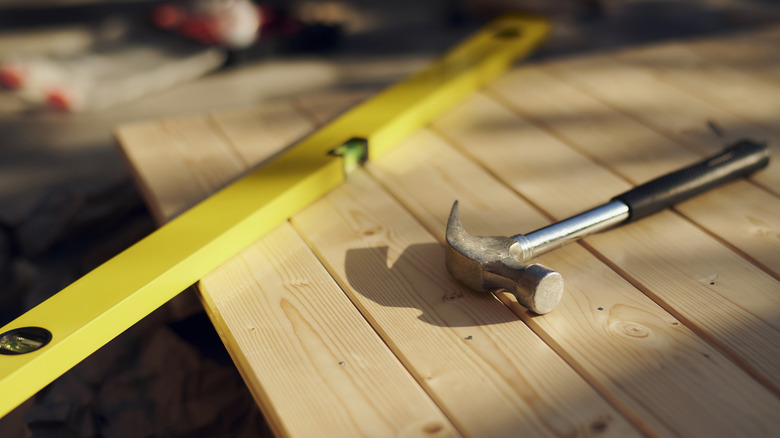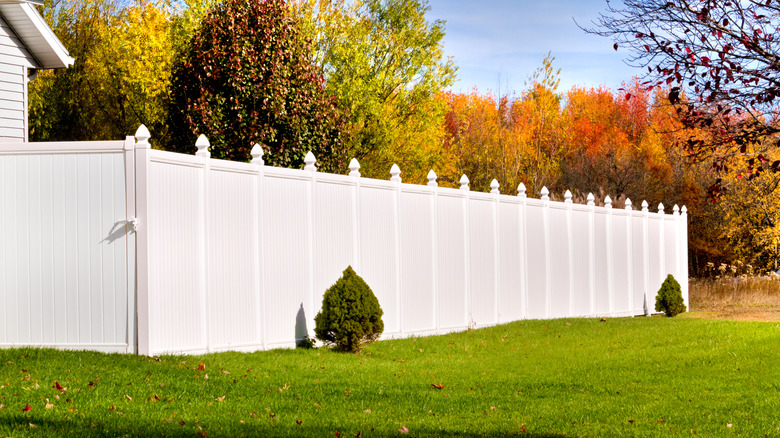The Biggest Hammer Mistake You're Making When Installing Vinyl Fencing
The hammer is a necessary tool for installing vinyl fencing and ensuring the posts are properly buried and secure. However, if you're not careful, one sharp thwack could result in splitting or cracking your brand-new fencing, possibly costing you more in repairs or replacement. Some contractors point out that even if you don't notice any visible damage, hitting your vinyl fencing directly with a hammer could still create stress cracks that might become more prominent later on. While many homeowners are aware of the different hammer types and when to use them, not everyone is familiar with what materials are prone to damage from this tool, vinyl being among them.
To prevent damage to your vinyl fence when hammering, you can use a small plank of wood as a buffer. This will soften the force of the hit and reduce the risk of cracking or splitting your vinyl. Hitting your vinyl fence posts directly with a metal hammer is a common vinyl fence installation mistake you can easily avoid. While vinyl is a durable material, it isn't completely impact-proof. Hail is well-known for damaging vinyl, and similar sharp impacts, like those from a metal hammer head, could contribute to damage. So, by using a wood plank as a buffer between the material and your tool, you can better protect your fencing during installation.
Don't make direct contact between your hammer and vinyl fence
Knowing how to install a vinyl fence and the crucial mistakes to avoid could make or break your project's success. The longevity and durability of your vinyl fencing relies on proper installation. To avoid snapping your vinyl posts or causing small cracks that could grow larger as time wears on, it's best to steer clear of using your hammer directly on your vinyl. Instead, place a 2x4 piece of wood as a separator between the fencing and your hammer head. Lay your plank flat on the fence, holding it with one hand but keeping fingers clear of the impact zone. Then, smack your hammer against the plank to ensure enough force is applied without harming the vinyl fence. The wood will soften the blows and distribute the energy, which protects the vinyl from direct impact.
Alternatively, you may consider swapping your standard hammer for a soft-faced one. This style of hammer can still be effective in construction projects, but its head is designed to be easier on delicate materials like vinyl. When using the 2x4 method or a soft-faced hammer, be aware that installation might take a little longer since there is an extra step involved. Although you may need to work a little slower, you can rest assured knowing that your hammer will be less likely to split your new vinyl fencing.

